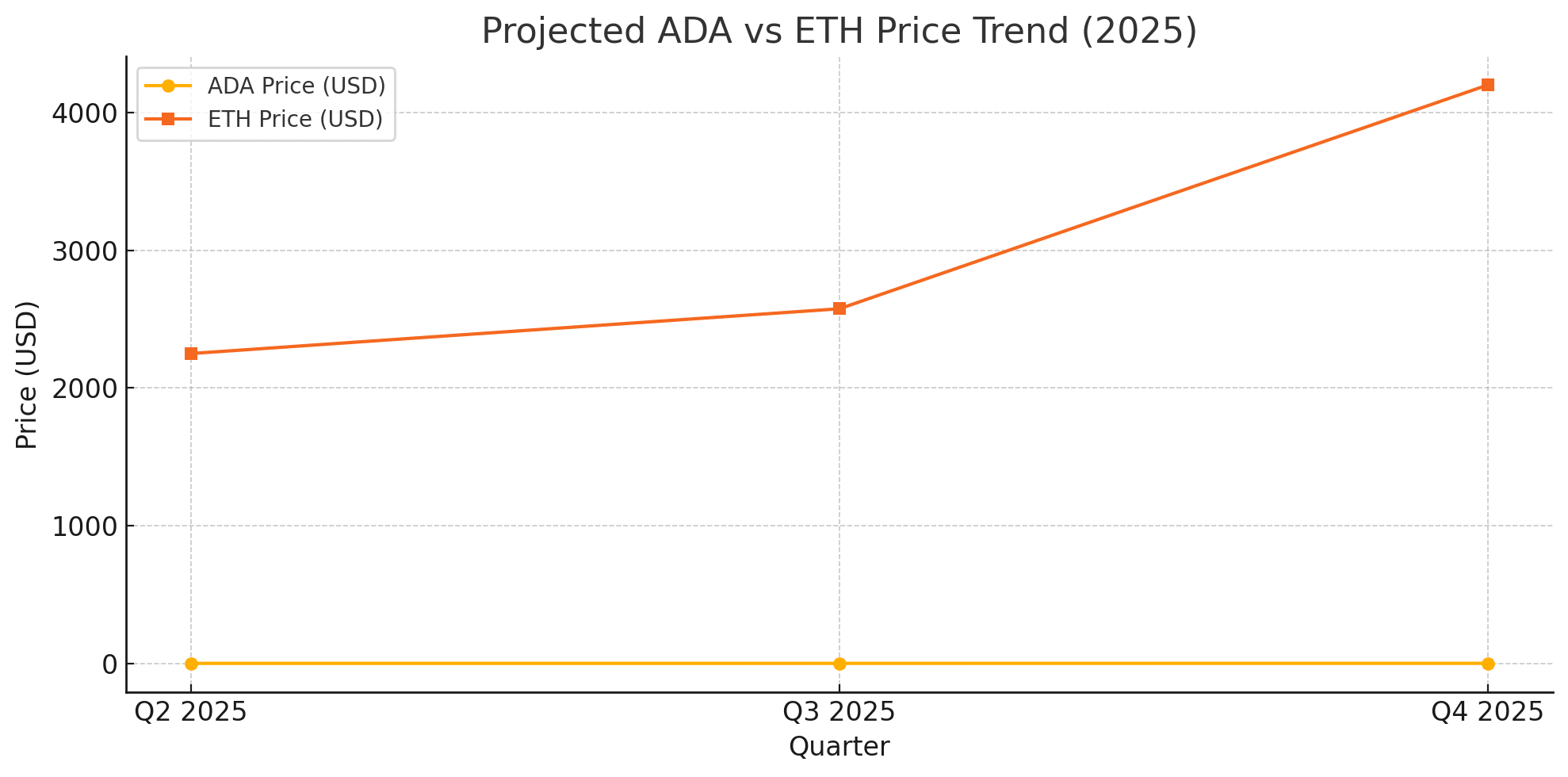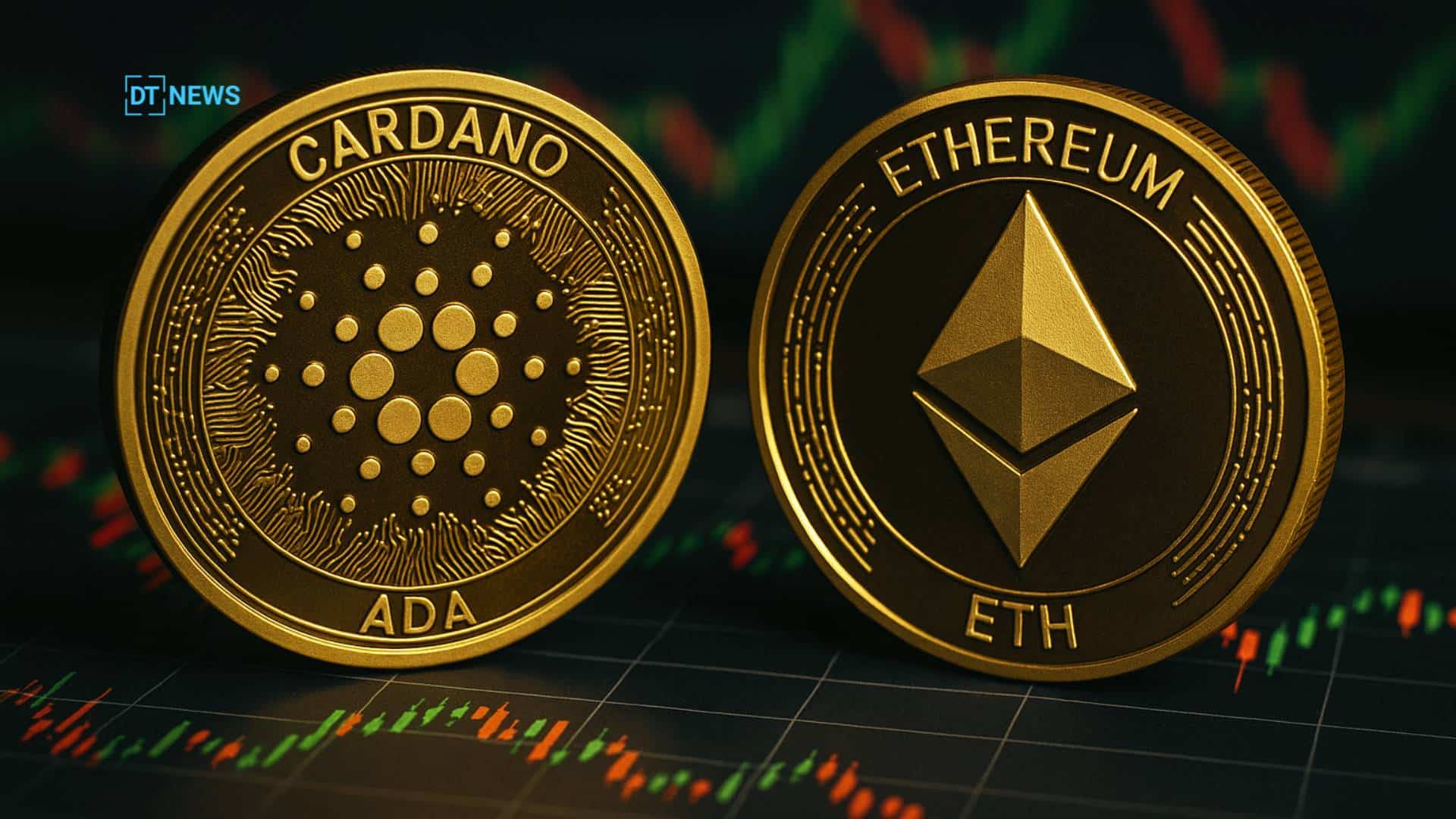Over the first week of July, Cardano vs Ethereum became the market’s hottest Layer-1 debate after ADA rallied 7 % intraday to outpace ETH’s 5 % advance. Yet on the longer-term ADA/ETH chart the ratio is still down 13 % from April, reflecting Q2’s stark divergence, Ethereum finished the quarter up 36 % while Cardano closed it in the red.
Analysts track this ratio because it signals when capital is rotating out of the smart-contract incumbent and into newer chains; until it stabilises, ADA’s rebound remains a contrarian bet.
Cardano vs Ethereum: Development Tells a Different Story
Cardano vs Ethereum, beneath the price candles, builder momentum is skewed the other way. GitHub data place Cardano fourth in raw developer commits for June, nine spots ahead of Ethereum. Over the same period Cardano logged a development-activity score of 2.29 versus Ethereum’s 0.74, underscoring a cadence of incremental upgrades rather than marquee hard forks.
Daily usage echoes that strength: active Cardano addresses jumped 24.6 % week-on-week while Ethereum slipped 14 % to 453 k, according to Artemis Analytics. Historically such shifts in user activity have preceded mean-reversion moves in the ADA/ETH pair, most notably November 2024’s rotation that carried ADA 286 % higher in six weeks.

Ethereum still commands the narrative
Ethereum’s own fundamentals, however, are hardly fading. May’s Prague/Electra ( Pectra ) upgrade improved throughput and wallet UX, shored up staking security and paved the way for institutional products such as layer-2–powered ETF wrappers.
Bull cases see that pipeline pushing ETH toward $4,900 before year-end, while cautious strategists warn the upgrade may do little to arrest ether’s 45 % YTD under-performance against bitcoin and Solana.
ADA catalysts lining up
Cardano’s rebound thesis rests on three pillars:
Network expansion: Active stake addresses just crossed 1.3 million, a record indicating growing long-term conviction.
Hydra & Mithril roll-outs: Lightweight off-chain scaling and fast-boot nodes enter public beta this quarter, potentially tripling throughput without compromising security.
Valuation gap: Even after July’s pop ADA changes hands at 0.00023 ETH, far below the 0.00052 ETH rotation peak reached last December.
If on-chain activity remains elevated and Hydra transactions begin routing high-volume dApps (NFT marketplaces, RWA tokenisation pilots), the rotation spread could narrow sharply.

Price Snapshot and Quarterly Outlook
| Quarter 2025 | ADA Spot (4 Jul) | ETH Spot (4 Jul) | ADA Range* | ETH Range* | Outlook |
|---|---|---|---|---|---|
| Q3 | $0.59 | $2,575 | $0.60 – $0.75 | $2,500 – $3,400 | Momentum hinges on ADA/ETH ratio stabilising, ETH ETF flows |
| Q4 | — | — | $0.75 – $1.10 | $3,400 – $4,900 | Hydra adoption + staking inflows could fuel ADA catch-up, ETH eyes ETF-driven melt-up |
*Ranges aggregate projections from Watcher Guru (ADA $0.71), The CryptoBasic analyst target ($1.33), Changelly baseline forecasts, AInvest’s $4,900 ETH scenario and Claude’s longer-term models. watcher.
Market positioning
Cardano vs Ethereum, derivative desks report traders favouring call-ratio back-spreads on ADA, cheap vega that pays if volatility spikes, as well as ETH calendar spreads that bet on post-ETF gamma. Spot flows, meanwhile, show a modest rotation with ADA/USDT volumes up 18 % on Binance, while ETH/USDT volumes fell 6 % week-on-week.
Bottom line
Until the ADA/ETH ratio prints a higher low, Ethereum retains technical dominance. Yet fundamentals, developer commitment, rising use-case throughput and the valuation gap, add weight to an eventual Cardano vs Ethereum rotation rebound narrative.
A summer of quiet shipping from Cardano’s core teams, coupled with investor fatigue after Ethereum’s Pectra buzz, could set the stage for ADA to outperform into Q4. For now, disciplined accumulation and spread strategies remain the smart way to play the divergence.
FAQs:
1. Why is Cardano being compared to Ethereum right now?
Cardano’s recent price jump, increased development activity, and upcoming Hydra upgrade are prompting comparisons to Ethereum’s performance.
2. What could drive Cardano’s outperformance against Ethereum?
Factors include higher developer activity, growing user base, and undervaluation relative to Ethereum’s current market position.
3. What is the ADA/ETH ratio, and why does it matter?
The ADA/ETH ratio shows how Cardano performs relative to Ethereum. A rising ratio indicates capital rotation into ADA from ETH.
Glossary of Key Terms:
ADA/ETH Ratio: A comparative metric showing the value of Cardano’s ADA token in terms of Ethereum (ETH). Often used to track market rotation between Layer-1 platforms.
Hydra: Cardano’s Layer-2 scaling protocol designed to increase transaction throughput by creating parallel processing “heads.”
Mithril: A Cardano protocol for fast, secure bootstrapping of nodes to improve speed and decentralization.
Rotation Rebound: A market phenomenon where capital moves from a dominant asset (ETH) to an underperforming one (ADA), triggering a relative price recovery.
Pectra Upgrade: Ethereum’s 2025 upgrade combining Prague and Electra proposals, focused on throughput, wallet UX, and staking enhancements.
Developer Activity Score: A metric that quantifies blockchain development based on GitHub commits, used to gauge ecosystem growth and innovation.



















































































































